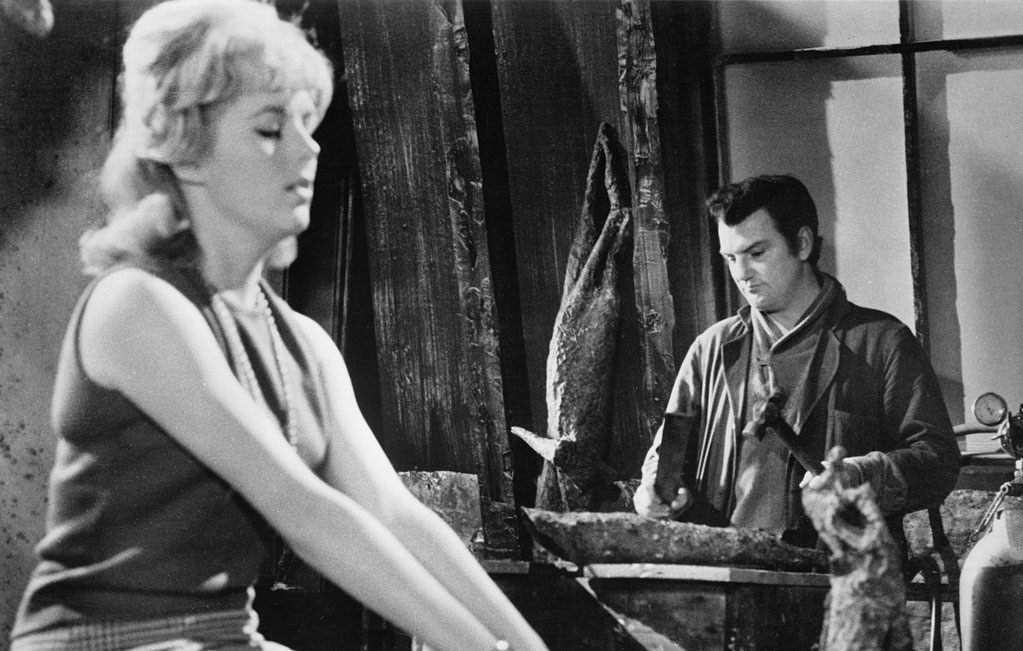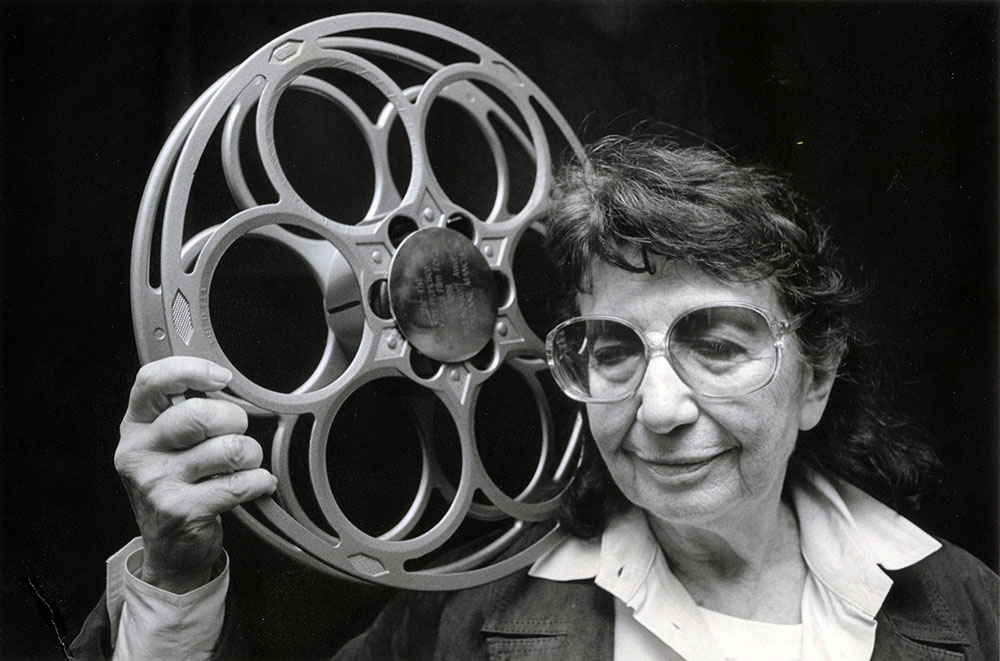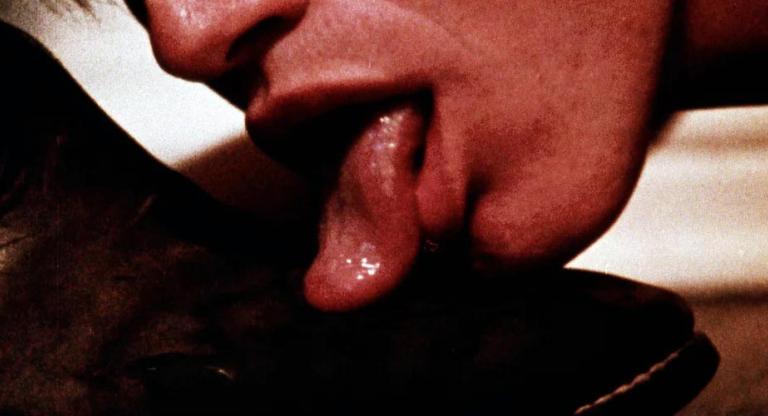This month and next, the Museum of Modern Art will screen 27 films from all over the world and in many genres, from the silent era to the 21st century, all championed by Adrienne Mancia in her decades-long career at MoMA and, later, at the Brooklyn Academy of Music. Organized by MoMA curator Ron Magliozzi, who worked with Mancia for many years at the museum, the wide-ranging series reflects “her unbound enthusiasm” for film in its many forms. From the early ’60s onward, Mancia introduced audiences to now celebrated filmmakers such as Wim Wenders, Manoel de Oliveira, and Pier Paolo Pasolini (who immortalized her in a poem), to Cinema Novo, to experimental and X-rated films, to the pleasures and unrecognized importance of low-budget drive-in movies, to various forms of animation, and more. She helped found Cineprobe, MoMA’s first screening series devoted to experimental and independent film and was a key film programmer for New Directors/New Films, which continues to introduce New York audiences to the work of first-time directors. Mancia died last December at the age of 95. As Ron observes, she lived “from the age of movie palaces to the age of streaming. That’s a pretty remarkable arc for a career.”
When I spoke to Ron, he had just listened for the first time to an oral history he had recorded with Mancia in 2001, “on a tiny cassette player,” a few years after she had left MoMA to become a founding curator of BAMCinématek.
Ron Magliozzi: I interviewed her at great length. And she said, “Don’t listen to this until after I’m dead, in case anything will get me in trouble.”
Karl McCool: Why do you think she said that?
RM: I don’t know. I mean, she had a troubled relationship when she departed [MoMA], and I think that’s the reason. It’s not something she talked about with me. We didn’t get into that because there was so much more interesting stuff to talk about. But that would have been the end of the interview. And I never quite ended the interview with her. She was working at BAM at that point and really busy, and I was busy.
KM: In a 2015 profile of her in The New Yorker, she told the magazine, “I was fired at MoMA. . . . I was, like, a dangerous person to have around.”
RM: I think we should stand by whatever she said. I will say that—and this is what she told me—she was never a museum person. She spent a lot of time going to film festivals. And she was proud of .pioneering, being part of that whole film festival movement, that starts in the ’40s, but really takes speed in the ’60s and ’70s. She thrived in the festival culture. She did not thrive in the museum culture as much as she did in the festival culture. She used to say, “I don’t like the title curator. I don’t want to be called a curator. I want to be called a programmer.”
KM: That’s interesting.
RM: Yeah. That speaks, I think, to an attitude about not wanting to be critical. She wanted everyone to be exposed to the things that she was exposed to, that she found interesting and exciting as art. But she didn’t want to be a critic. She admitted, “I’m not a scholar, and I’m not a critic. I’m a programmer.”
KM: Am I correct in thinking she didn’t write about film much?
RM: She didn’t much. We’re showing Woman in the Dunes [1964], and she did a review of Woman in the Dunes for Film Comment that I quote in my blurb extensively. She could write. It’s a pretty long piece that she wrote. And there are a few other pieces that she wrote through the years. And there are introductions that she did [at screenings] and press releases in the museum’s archive.

KM: But she wasn’t someone who was going to publish a book.
RM: No. That’s the thing. The notion of festival folks who do introductions and do that kind of activity, they’re speaking rather than writing—that’s something that could be explored more. Nowadays people think curators write. Curators are not one thing. Some curators are really good at networking, some curators are more scholarly, there are some that are critics. Personally, as a curator, I’m a good collector. My curating all comes out of collections. For other curators, it comes out of their festival activity.
KM: Although collecting was not her main interest, do you feel she shaped and influenced MoMA’s collection?
RM: She did. She brought a lot of films into the collection. Adrienne bragged, “I have no specialty.” She was very proud of the fact that she wasn’t a specialist in any kind of cinema. She was a big fan of animation and said, “I did more for animation at the museum than anyone had done before me.” And that’s absolutely true. So when we came to organize the program, one way of starting was to say, let’s see if we can find everything she had an influence in bringing into the collection.
She and Larry Kardish, through Cineprobe and New Directors/New Films, brought stuff in—Cineprobe in particular. A lot of artists’ cinema came into the collection because of Adrienne and Larry together. As you know, we’re not showing Fred Halsted in this series, but Halsted’s a good example of that. He was one of the most out-there artists they brought in, because he was doing what was considered gay pornography... Adrienne introducing Fred, Larry making sure the 16mm prints came to the museum. So we were the only place that actually had good quality prints of L.A. Plays Itself [1972], Sextool [1975], and Sex Garage [1972]. We subsequently preserved them. Altered Innocence released them on Blu-ray recently. That’s because of what Adrienne and Larry had done.
KM: I remember seeing letters in MoMA’s archive from trustees angry about Mancia and Kardish showing hardcore pornography in the museum.
RM: Yeah, Fritz the Cat [1972], the Russ Meyer films they showed, things like that were controversial. As a result of their relationship with Russ Meyer, he left his films to the museum.
KM: With the animation in this series alone, you have a wide range of filmmaking, from Chuck Jones to the Hubleys to lesser known Eastern European animators.
RM: At one point I thought of doing a tribute to Adrienne that was all animation, because she was very proud of the animation activity. They’re really cool films, a broad range. It was the most fun to do that [program]. Francisco [Valente], our Curatorial Assistant, and I had a lot of fun watching those. The Warner Brothers cartoons are so funny. We were both roaring with laughter. We have nice 35mm prints of those, too.
KM: You’re showing Maya Deren’s Meshes of the Afternoon [1943], which was famously rejected by MoMA under the leadership of its founding film curator, Iris Barry, leading, some say, to the development of alternative venues like Cinema 16 and Anthology Film Archives.
RM: Meshes of the Afternoon came into the collection, I think, before Adrienne was here. Curators have an influence while they’re here. Iris rejected it, Adrienne championed it. The reason it’s in the program is because Meshes of the Afternoon made a huge impression on Adrienne when she first saw it. She went to a screening of the film in the late ’50s or early ’60s, at which Deren presented the film. It might have been at Cinema 16. And it made a huge impression on her understanding of what it meant to do an independent film, what an artists’ cinema meant. Particularly how artists’ films and independent films could be liberating. She said Maya Deren was wearing black slacks and a very blousy white blouse that you could see through, so you could see Maya’s breasts through the blouse when she spoke to introduce the film. Adrienne said people were saying, “You can see her breasts!” You know, whispering in the audience. And seeing the film after having Maya introduce it that way made a huge impression on her, in terms of the notion of making films being a liberation for the filmmaker and for the audience. And that’s specifically why we highlighted it in the program. Also because Adrienne was close to a lot of women filmmakers, we wanted to have a program of women’s films. She was very close to Agnès Varda and Shirley Clarke.
KM: The Francis Ford Coppola entry in this program, Dementia 13 [1963], is not one of his best-known films, to say the least. It does, however, reflect Mancia’s championing of American International Pictures and the value of the low budget, drive-in movie.
RM: Yeah, it does. And it’s also an effort on our part to cover genres. It’s a horror film, and we wanted to get another genre in there. The series really reflects Adrienne’s various interests and lack of specialty intentionally. We could be doing Adrienne Mancia all year long if we wanted to cover everything. The only thing she was not especially interested in, she admitted, was acting. She was very influenced, when she was very young, by Katharine Hepburn in Spitfire [1934], where she plays the female flyer. She wanted to be a female flyer when she was young. But she wasn’t a movie-actor person. It was directors, national cinemas, genres that interested her.

KM: There are a lot of major filmmakers in this series, although often not the films you might immediately expect from, for instance, Pasolini, Wenders, or King Vidor.
RM: When I started here at the museum in 1977, as a volunteer, one of the first things I did was answer phones, and King Vidor called up, because it was around the time [his films] were being programmed [by Mancia]. It made a big impression on me. I was speaking to King Vidor!
KM: You started at MoMA in 1977 as a volunteer. Mancia started at MoMA in 1964 as secretary. Things seem very professionalized now, with museum studies, curatorial, and archiving graduate programs. Was it typical to start at MoMA as a volunteer or a secretary and just stay with the institution and create a role for yourself within the museum?
RM: I think the short answer is yes. In this period. It all has to be rooted in the history of the museum and of film culture of the period. How people were accessing films, seeing them only on 16mm, or only in theaters, or only in the museums, or later in repertory theaters in the ’70s. Eileen Bowser also started, a little before Adrienne, as a secretary to Richard Griffith. And when Adrienne joined, she was a Richard Griffith secretary as well. And there was Margareta Akermark.
When I started at the museum, it was a brief period when the department was completely run by women. Eileen and Adrienne and Mary Lea [Bandy] and Mary Corliss in film stills and Madeline Matz in film preservation. And most of the men were gay. Not all of them, but most of them. So it was a nice environment to be a part of. It’s one of the reasons I stayed.
I started as a volunteer in the Film Study Center and then, when the job opened up, I was hired to be an assistant and then I managed access to the collections and answered questions on the
phone. You know, this is all before the internet.
KM: Sounds like Katherine Hepburn in Desk Set [1957].
RM: Yeah, yeah. I like that film a lot. Because it’s just like the Study Center, answering questions on the phone, exactly how we did it.
But Adrienne had no interest in film at the beginning of her life. She wanted to be an actress, she wanted to be in theater and thought of a career on Broadway. She got a job with a Broadway press agent, because she thought, “This is how I’m going to get into the theater.” This would’ve been in the ’50s. She was fired after the first two or three days. And she was told she was fired because she had no personality. And if you knew Adrienne, you knew that she had a very strong personality! Any troubles Adrienne had career-wise, at MoMA or at BAM or anywhere, were because Adrienne had a very strong personality.
The next job was at the Village Voice. She was the front desk of the Village Voice at the Sheridan Square office. So everyone who came to The Village Voice—artists, filmmakers—she spoke to them. So that’s how she credited being exposed to things beyond just theater.
Her next step was working at Contemporary Films. Contemporary Films, along with Brandon Films and Film Incorporated, were doing 16mm film distribution, which starts in the ’40s and really heats up in the ’60s and ’70s. That changed everything for her and, really, for the period. It’s very big. It was access to the whole body of film history that people now have on [video] or streaming. So she gets a job at Contemporary Films. Leo Dratfield is running Contemporary Films. Leo doesn’t like to go anywhere by himself. So Adrienne is his partner at all the screenings. He took her to Bill Everson’s course at the New School. He took her to Cinema 16. This is when she saw Maya Deren. It’s also when she begins curating. She would’ve called it programming. Because she was the film booker. People called her up to say, “What should we screen?”
KM: It’s interesting that she started out wanting to be a theater actor and later claimed to have no interest in film actors.
RM: We’re showing Jim McBride’s David Holzman’s Diary [1967]. She acted in one of his films, McBride cast Adrienne as the mother in his sex comedy A Hard Day for Archie [1974, aka Hot Times], loosely based on the Archie comic book series.
KM: She kept the name Mancia all her life, although it came from a relatively short-lived marriage.
RM: She was born Adrienne Johnson. Her parents were both Jewish, from Romania and Russia. In 1953 she goes to Paris. And she meets this guy, an artist named Mancia. She said he was very jealous and controlling. They never had any money. He didn’t make much money as an artist. He did paint her portrait. She keeps that name, Mancia. It’s a much cooler name than Johnson. I mean, Johnson isn’t really a Jewish name either, so it was probably a name the family took on. So I think this is kind of taking on an identity and a European identity. It kind of identifies that she spent those years, you know, the ’50s, a significant period to be in Europe.
KM: You’ve talked about Adrienne, along with Eileen Bowser, for whom you also organized a tribute screening series in the past, as mentors.
RM: When I started Eileen and Adrienne were my mentors, and I stayed in touch with both of them after they left the museum. I used to meet Adrienne down on 14th Street, at her diner for these breakfast things. A lot of people did. Fabiano Canosa was really close to her. And Jon Gartenberg, who worked with us on this series and who was instrumental in us getting Adrienne’s library and archive, which we acquired just recently. Jon is going to be introducing a couple of screenings, and he’s written a couple of the program notes.
KM: It gets back to what we were talking about, being interested in the film festival circuit, in programming. Some curators might want to publish. She was interested not in leaving books behind, but maybe protégés.
RM: Yes, absolutely. I should say, she had a huge library. She didn’t write books, but she had a huge library. Every book was crammed with other related documentation. So the books were bulging with papers. She did a lot of intense research and would find the rarest books she could. She brought a lot of material back to the museum. Adrienne in particular would bring books and festival catalogs back from every festival in the world. Adrienne really thrived more in the festival culture. I went to the Pordenone Silent Film Festival for a period, and she was always there. Adrienne was very generous. If you were at a festival with her and she was with a director she would introduce you to the director, she would invite you to have lunch with her and the director. Not every curator does that. But she liked bringing people together that way. More than any other curator that I ever worked with. Even to the end, when she was retired, she always had these programming ideas. “You should do this.” “You should contact this director.” She did this with everybody.
“Modern Matinees: In Celebration of Adrienne Mancia” runs November 1–December 22 at the Museum of Modern Art.




